The 18 most important sneakers of all time
18. Nike x Tom Sachs NikeCraft Lunar Underboot Aeroply Experimentation Research Boot Prototype, 2008–12

17. Nike Foamposite, 1997
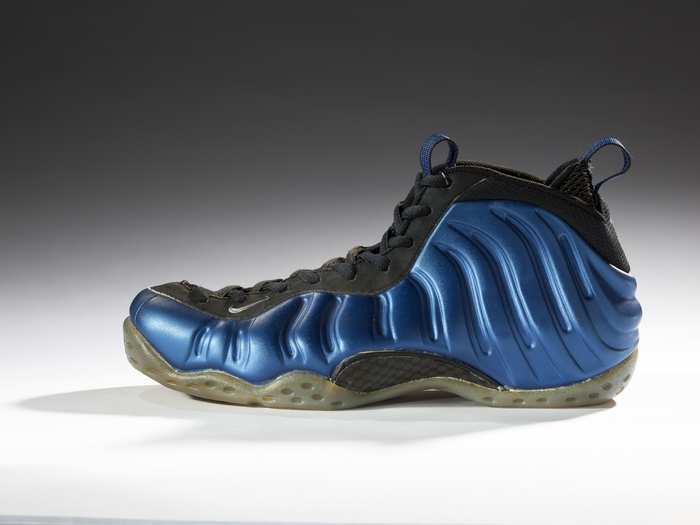
The Nike Foamposite is famous for being the first sneaker with an upper made entirely out of one piece of synthetic material. This foam allowed the shoe to mold to the wearer's foot and became a favorite of basketball player Penny Hardaway.
From: Nike Archives. (Photo: Ron Wood. Courtesy American Federation of Arts/Bata Shoe Museum)
16. Nike Air Jordan III, 1988
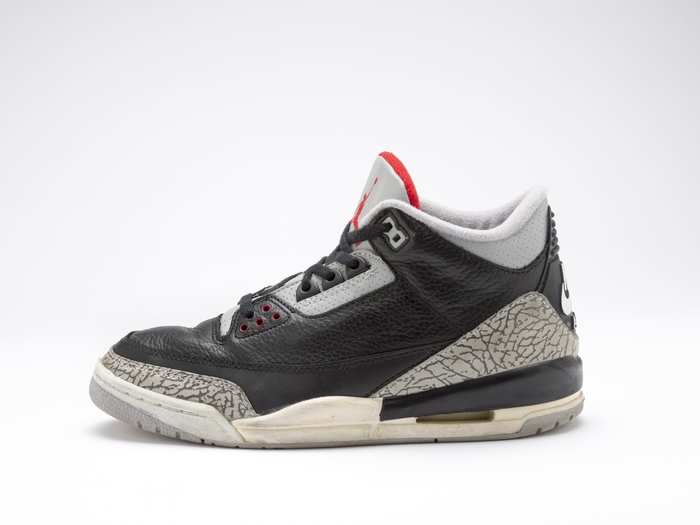
The AJ III was the first shoe ever to feature the now-iconic Jumpman logo. The shoe's elephant print accents, which was later featured in a ton of other Jordans, were put in after Michael Jordan requested a shoe that looked worn-in even while new.
From: Kosow Sneaker Museum (Electric Purple Chameleon, LLC). (Photo: © Kathy Tarantola Photography. Courtesy American Federation of Arts)
15. Common Projects Achilles Low, 2015
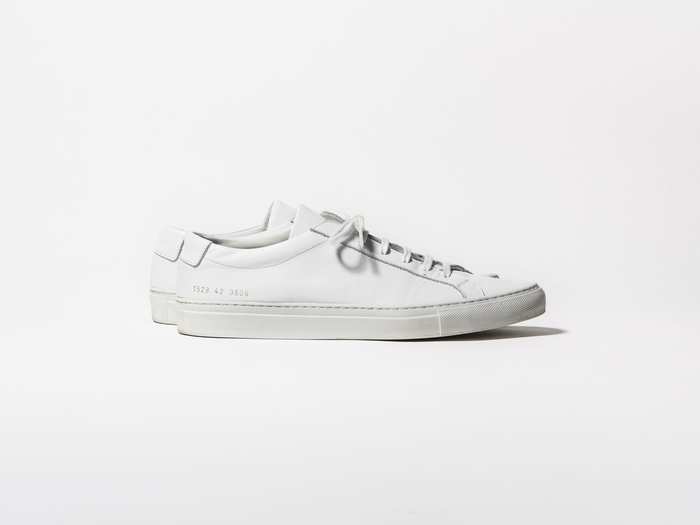
Common Projects, though a relatively new brand, has already risen to iconic status among those who appreciate a minimalist approach to luxury sneakers. The Achilles Low, which is pictured and is the first model created by the brand, is often thought of as the perfect, plain white low-top sneaker.
From: Collection of Common Projects. (Photo: Courtesy American Federation of Arts)
14. Puma x Undefeated Clyde Gametime Gold, 2012
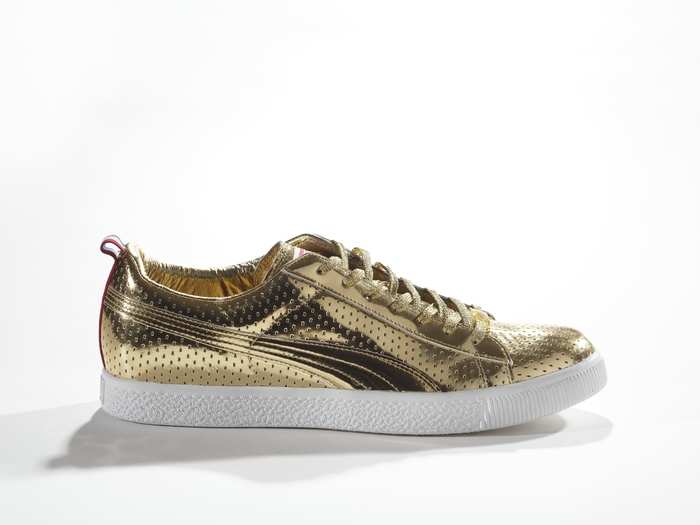
This Nike collaboration with streetwear brand Undefeated paid homage to the US Men's Basketball team's gold-medal-winning performance. The sneaker is Puma's Clyde model in gold with perforations all over.
From: PUMA Archives. (Photo: Ron Wood. Courtesy American Federation of Arts/Bata Shoe Museum)
13. Pierre Hardy Poworama, 2011
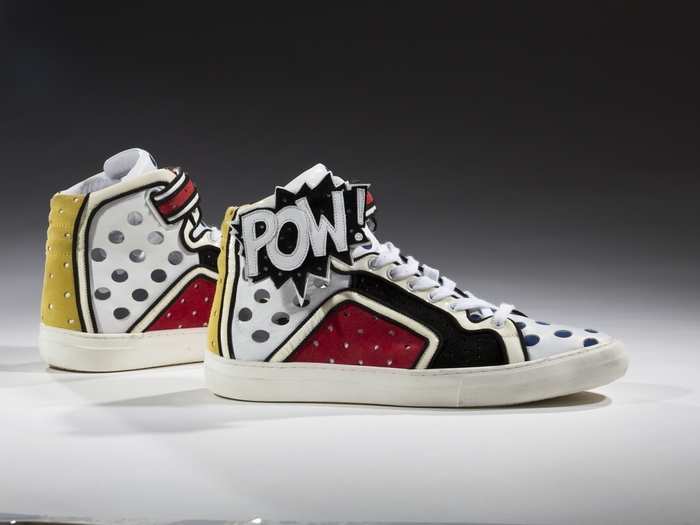
These sneakers draw from the inspiration of artist Roy Lichtenstein's use of primary colors and graphics to create a sneaker that looks much like a cartoon. They were created as a limited-edition.
From: Collection of the Bata Shoe Museum, Toronto; Gift of Pierre Hardy. (Photo: Ron Wood. Courtesy American Federation of Arts/Bata Shoe Museum)
12. Louis Vuitton x Kanye West Don, 2009
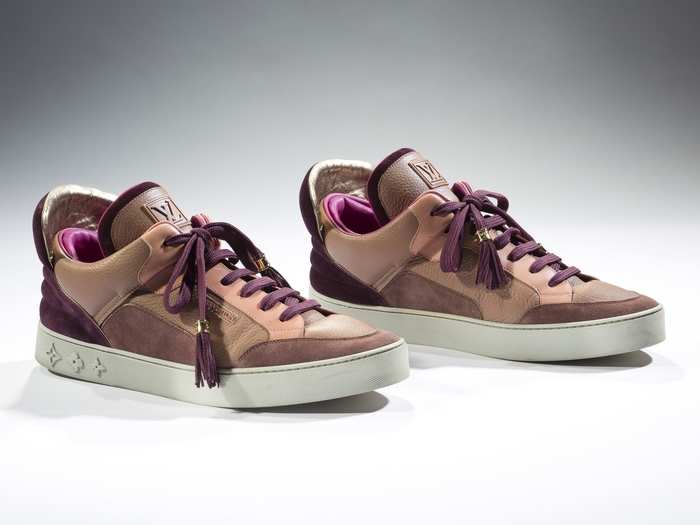
Kanye West collaborated with international French design house Louis Vuitton in 2009, resulting in the ultra-posh Don sneaker. With 24k gold shoe lace rings and premium materials, it's obvious both collaborators had a taste for luxury.
From: Private Collection. (Photo: Ron Wood. Courtesy American Federation of Arts/Bata Shoe Museum)
11. Nike x Supreme Dunk High Pro SB, 2003
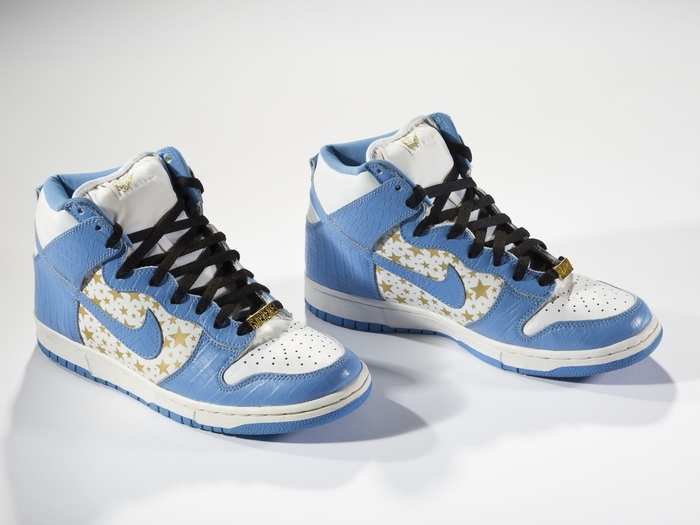
One of Nike's first forays into the skateboarding world, this shoe marks its 2002 collaboration with legendary skate brand Supreme. Only 1,000 of these exact shoes — featuring blue mock croc leather and gold stars — were made. And they were only sold in New York and Tokyo. Because of this, they are one of the rarest and most sought-after shoes in the world.
From: Collection of Sheraz Amin. (Photo: Ron Wood. Courtesy American Federation of Arts/Bata Shoe Museum)
10. Adidas Micropacer, 1984
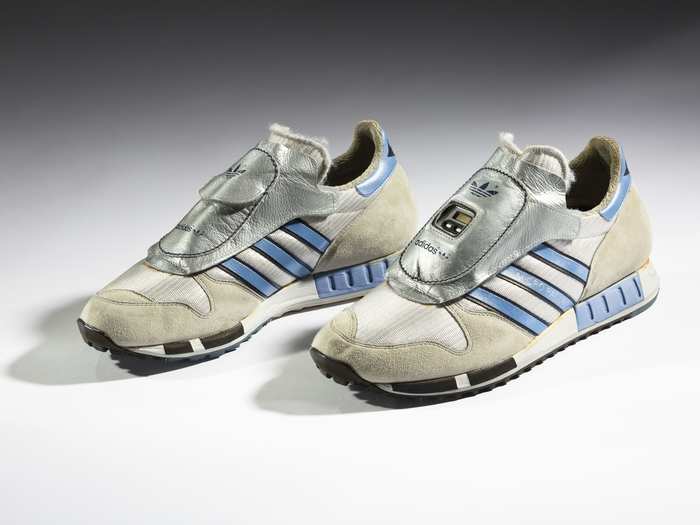
An early adopter of wearable technology, Adidas' Micropacer had a sensor in the left toe that measured distance, running pace, and calories burned. The data was read on the shoe's small digital screen. At its debut, it was heralded as the beginning of a new age of performance-enhanced by technology.
From: Collection of the Bata Shoe Museum, Toronto; Gift of Phillip Nutt. (Photo: Ron Wood. Courtesy American Federation of Arts/Bata Shoe Museum)
9. Adidas Stan Smith, circa 1980s
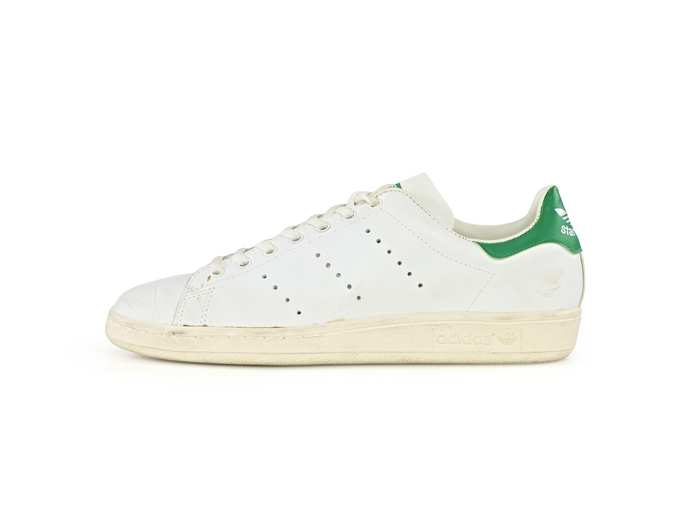
Here's an oldie you can actually see out and about today. Originally created in the 1960s and named after French tennis player Robert Haillet in 1971, the shoe was primarily intended for playing tennis. After Halliet retired from tennis in '78, Stan Smith — who had been invited to endorse the shoe eariler as well — stepped in as the shoe's eponymous new frontman.
From: Adidas Group. (Photo: Adidas AG / studio waldeck. Courtesy American Federation of Arts)
8. Adidas x Run–DMC 25th Anniversary Superstar, 2011
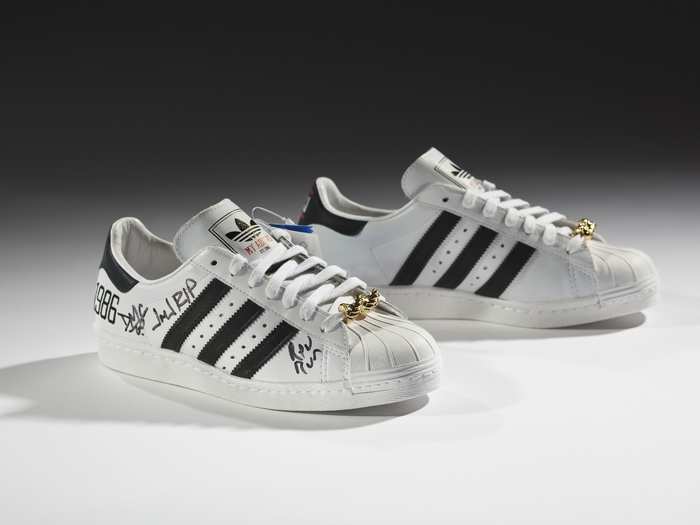
After an Adidas executive saw them preform at Madison Square Garden, Run–DMC became the first non-athletes to receive a sneaker contract. They wore them without laces, which was a controversial choice as this was a style popularized in America's prisons (the laces were considered a hanging hazard).
This style was a 2011 reissue of the design which originally debuted in 1986.
From: Courtesy of Run–DMC, collection of Erik Blam. (Photo: Ron Wood. Courtesy American Federation of Arts/Bata Shoe Museum)
7. Nike Waffle Trainer 1974
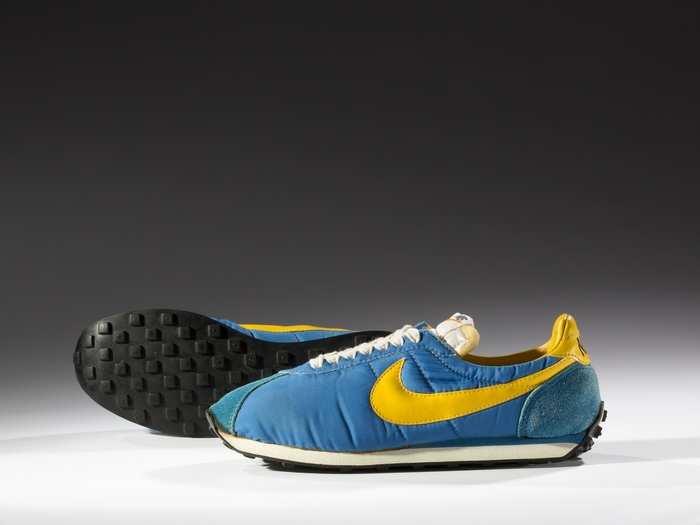
This shoe was born out of a quest to create the most lightweight running shoe ever. The famous waffle tread — which created a durable, feather-light sole with great traction — was found after an experience with an actual waffle iron. The nylon in the upper was also new for the time.
From: Northampton Museums and Art Gallery, Northampton, UK. (Photo: Ron Wood. Courtesy American Federation of Arts/Bata Shoe Museum)
6. Converse Gripper, late 1940s-early 1950s
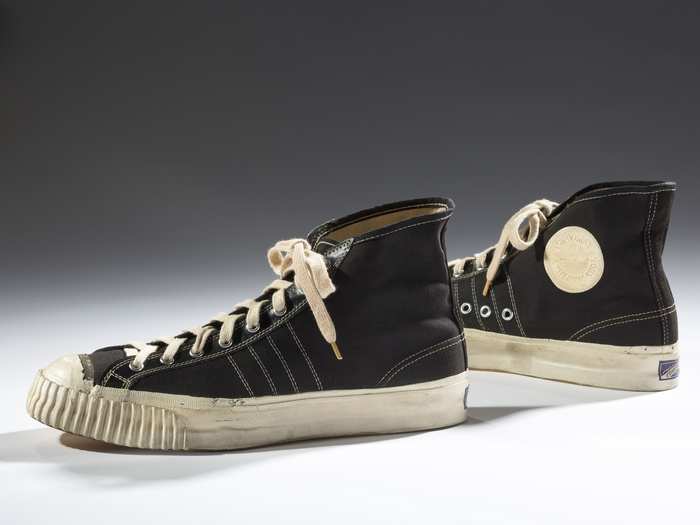
This popular Converse model stood out for its chunky ribbed toe and the fact that it was made with post-war surplus "army duck cloth." It also had additional cushioning for playing sports other than basketball.
From: Collection of the Bata Shoe Museum, Toronto. (Photo: Ron Wood. Courtesy American Federation of Arts/Bata Shoe Museum)
5. Gebru¨dder Dassler Schuhfabrik Modell Waitzer, 1936

Adi Dassler, who went on to found Adidas, offered this newfangled running shoe to African-American athlete Jesse Owens for the 1936 Berlin Olympics. Owens wore a custom pair and went on to win four gold medals (the most of any athlete ever up to that point), much to Adolf Hitler's racist chagrin.
From: Adidas Group. (Photo: Adidas AG / studio waldeck. Courtesy American Federation of Arts)
4. Dominion Rubber Company Fleet Foot, circa 1925
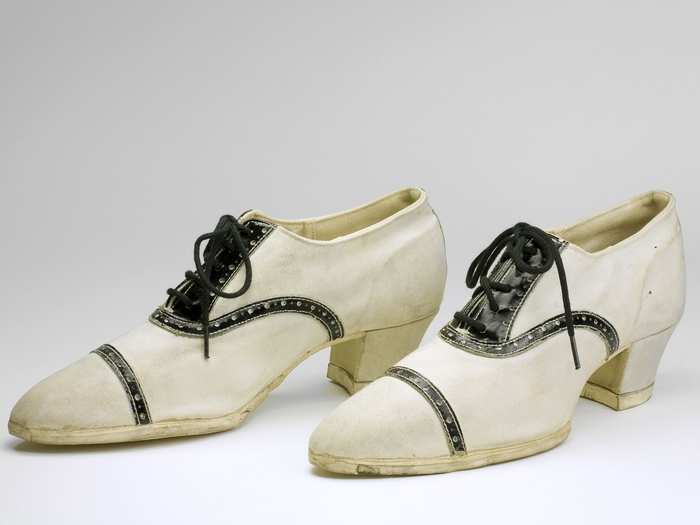
At the dawn of the 20th century, there were concerns that a woman's participation in sports would detract from her femininity. These high-heeled sports shoes conveyed that the wearer was, indeed, female, while the brouging suggested she was ready to get in the game.
From: Collection of the Bata Shoe Museum, Toronto. (Photo: Hal Roth. Courtesy American Federation of Arts/Bata Shoe Museum)
3. Converse Rubber Shoe Company All Star/Non Skid, 1917

Converse marketed two shoes in 1917: the brown canvas All Star (pictured) and the white canvas Non Skid with a non-skid tread. These shoes went on to be know as Chuck Taylors in 1934, after the styles basketball player namesake joined the company in the early '20s to promote the shoe.
From: Converse Archives. (Photo: Courtesy American Federation of Arts)
2. Thomas Dutton and Thorowgood Running Shoe, 1860–65
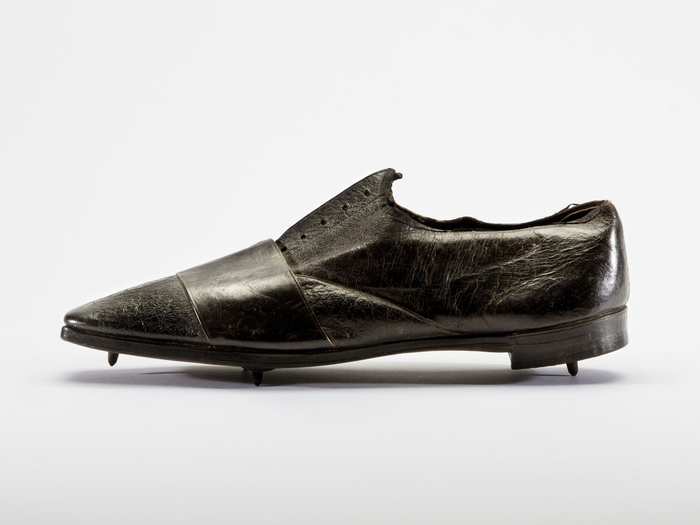
In the 1800s, running shoes more resembled dress shoes than anything sporty. This shoe, which is thought to the oldest in existence, has spikes on the sole and a strap across the instep over the laces for support and performance while running.
From: Northampton Museums and Art Gallery, Northampton, UK. (Photo: Greg Washington. Courtesy American Federation of Arts/Bata Shoe Museum)
1. Nike Air Jordan I, 1985
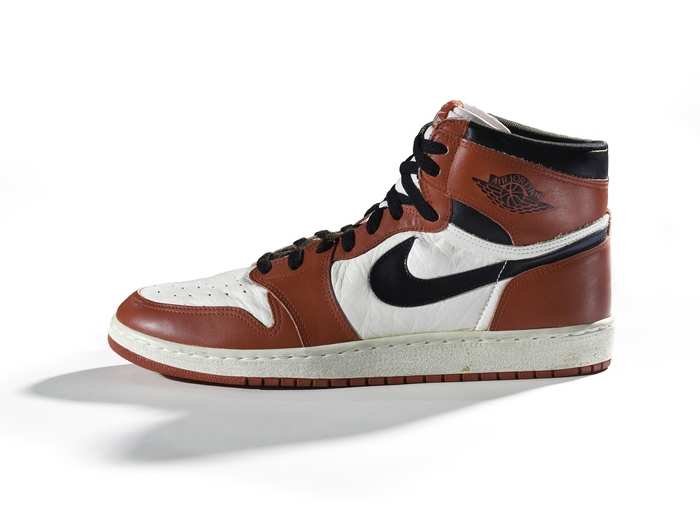
The legendary Nike Air Jordan I was created in 1984 for Michael Jordan. The red and black matched the colors of his team, the Chicago Bulls. Legend has it that the 1984 version didn't have enough white in it, so MJ was fined $5,000 every time he stepped onto the court wearing his Jordans. The model pictured is from 1985, after the shoe was revised to include more white.
From: Nike Archives. (Photo: Ron Wood. Courtesy American Federation of Arts/Bata Shoe Museum)
Popular Right Now
Popular Keywords
Advertisement